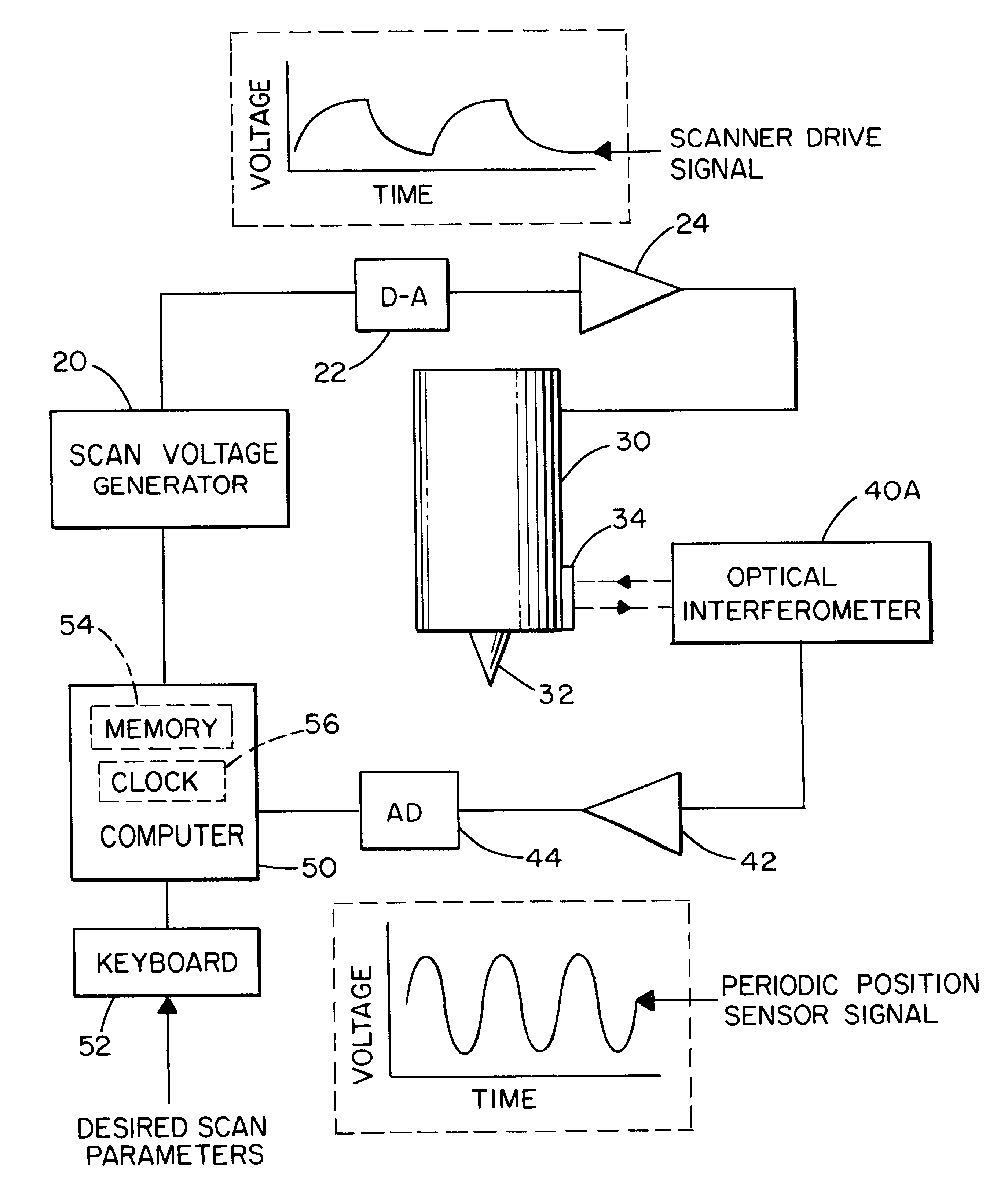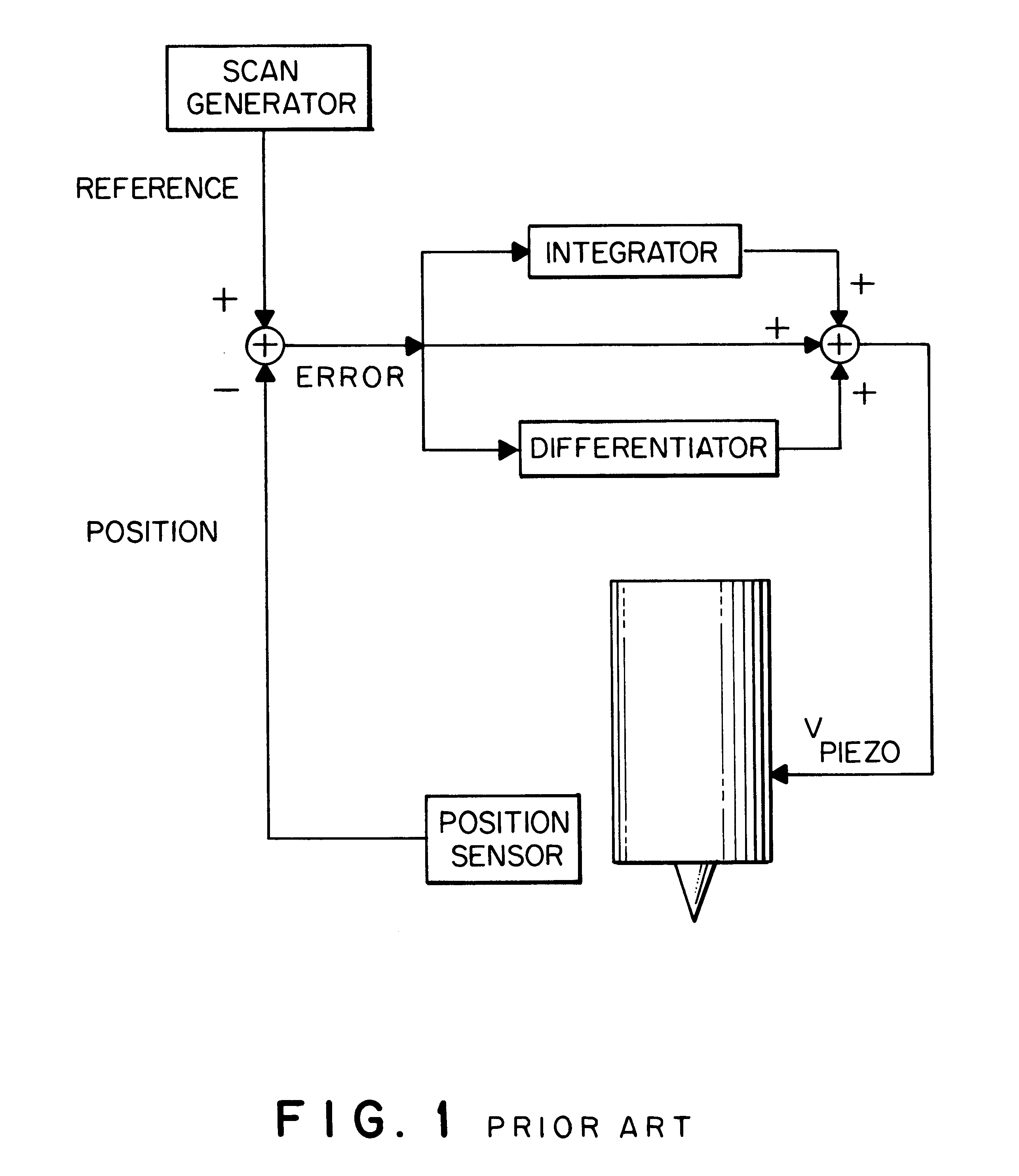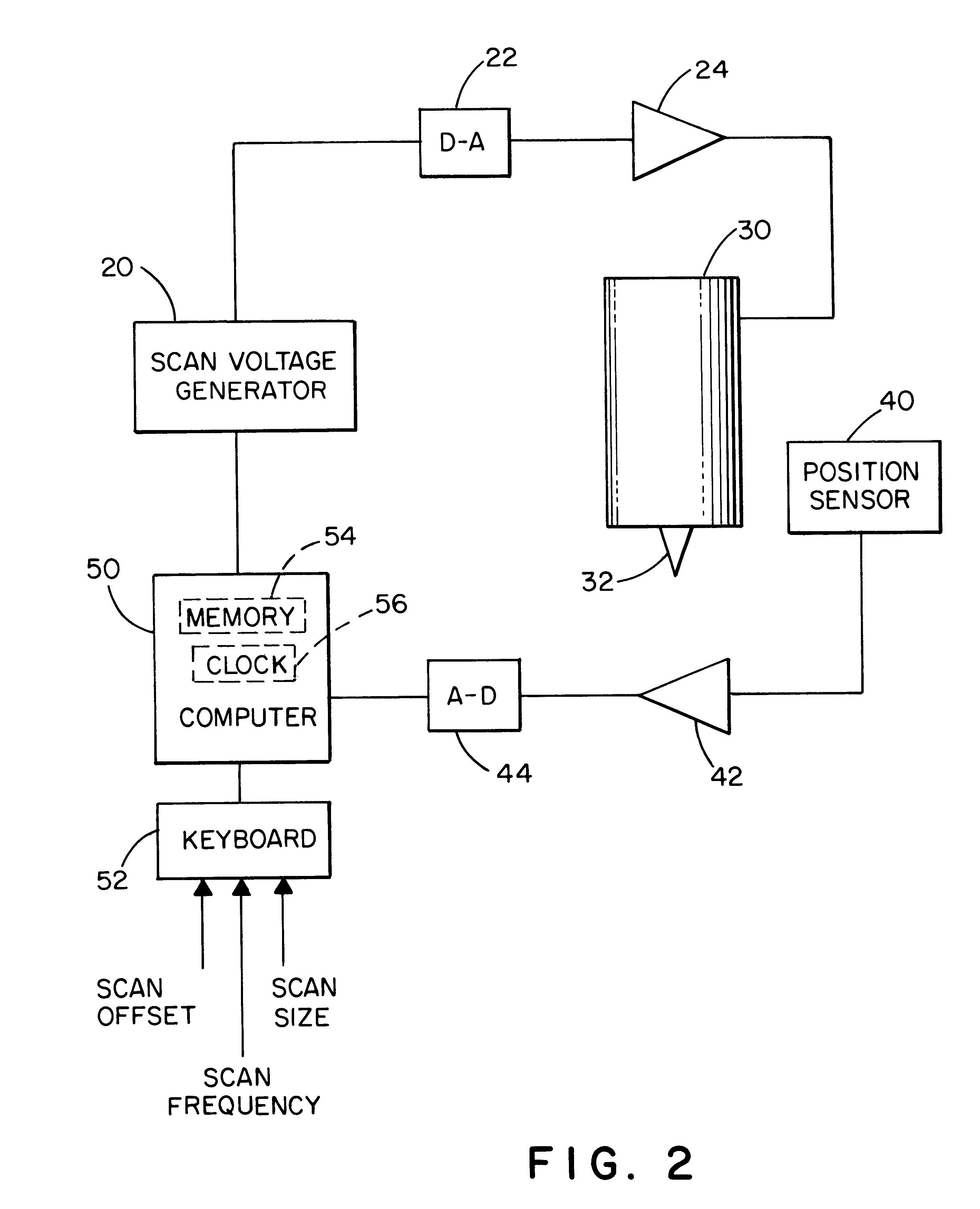Scan control for scanning probe microscopes
a scanning probe and microscope technology, applied in the direction of material analysis using wave/particle radiation, generators/motors, instruments, etc., can solve the problems of asymmetric scan pattern, linear signal applied to piezo electrodes no longer producing linear scans, and acquiring unwanted behaviors of piezoelectric scanners, etc., to achieve small error, small position error, and large sensor signal-to-noise ratio
- Summary
- Abstract
- Description
- Claims
- Application Information
AI Technical Summary
Benefits of technology
Problems solved by technology
Method used
Image
Examples
Embodiment Construction
The invention is a method of controlling a scanner using a parametric scan voltage waveform whose parameters are updated using a motion sensor to sense plural scanner positions which are compared to the desired scanner motion and used to vary the scan voltage parameters to maintain the scan linear and free of drift and creep. The method implemented uses a high speed digital computer to process the position data according to a single numerical algorithm, or a set of related algorithms which share data in a digital memory, including the steps of: calculating the parameters of a position function describing the scanner motion, comparing the position function parameters with values set by the operator and stored in memory to obtain a measure of the error in the scan, and adjusting another set of parameters defining the scan voltage according to the measured scan error in order to cause the scanner to deflect linearly with time and to compensate for scanner drift and creep. This is in co...
PUM
| Property | Measurement | Unit |
|---|---|---|
| scan sizes | aaaaa | aaaaa |
| scan voltage | aaaaa | aaaaa |
| size | aaaaa | aaaaa |
Abstract
Description
Claims
Application Information
 Login to View More
Login to View More - R&D
- Intellectual Property
- Life Sciences
- Materials
- Tech Scout
- Unparalleled Data Quality
- Higher Quality Content
- 60% Fewer Hallucinations
Browse by: Latest US Patents, China's latest patents, Technical Efficacy Thesaurus, Application Domain, Technology Topic, Popular Technical Reports.
© 2025 PatSnap. All rights reserved.Legal|Privacy policy|Modern Slavery Act Transparency Statement|Sitemap|About US| Contact US: help@patsnap.com



